
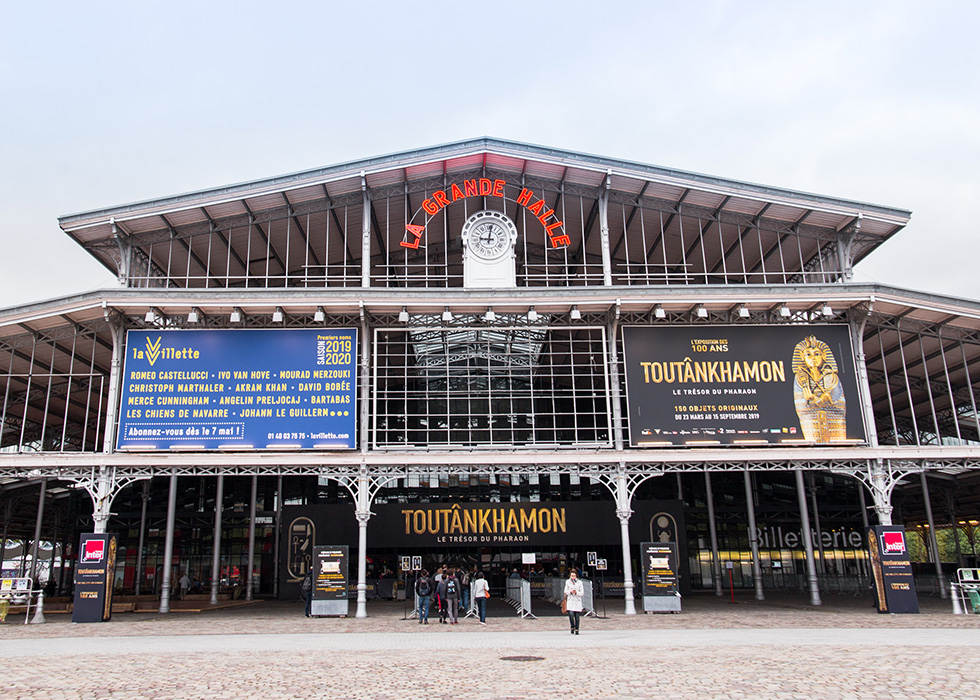
In 1922, the excavation of Toutankhamon's grave attracted worldwide attention. Toutankhamon was a pharaoh of ancient Egypt who started to rule his empire at a young age. He died nine years after being throned, and didn't accomplish anything special. However, once his grave in Valley of the Kings was unearthed, he became a world-renowned figure. Archaeologist and Egyptologist Howard Carter found a perfectly preserved gold coffinette where the pharaoh's mummy lies. This year, in Paris, you have a chance to take a closer look at the authentic remains from 3,000 years ago.
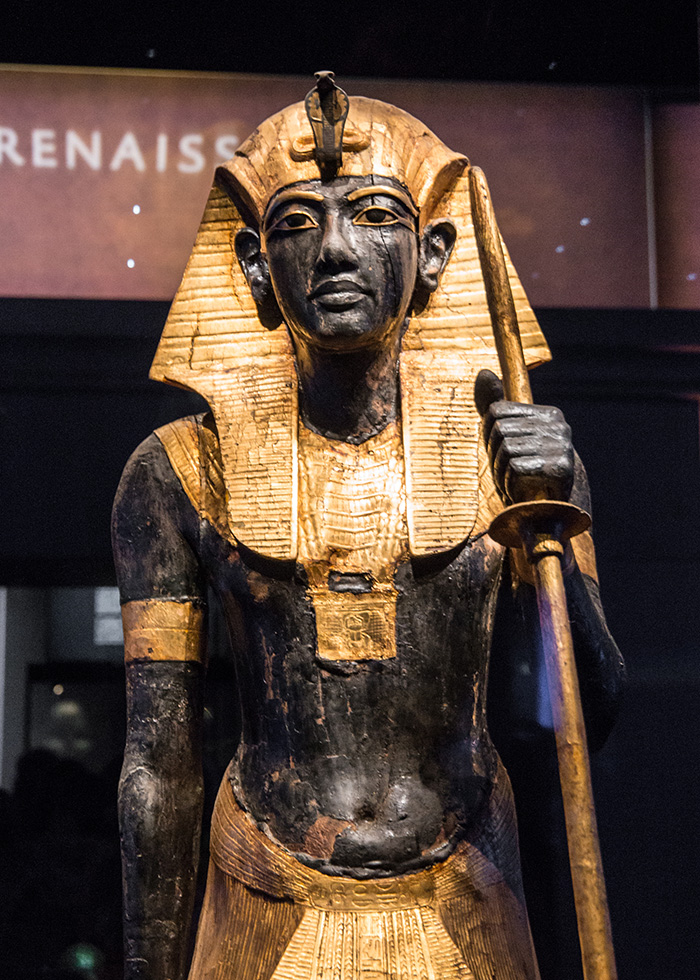
This is an extraordinary display of ancient Egyptians' beliefs about the afterlife. The exhibition displays about 150 exhibits excavated from Toutankhamon's tomb. Sixty of those will be their first and last display outside of their country, Egypt. After the world tour exhibition, it will be installed permanently in the Egyptian art museum which is currently under construction.
The guardian statue of the entrance to the center of the Pharaoh tomb is also it's first to come abroad, and one of the best-preserved guardian statues. The Guardian, depicted as the god of the sun, has a black skin which symbolizes the eternal promise of the fertility of the Nile and the revival, and the gold means the sacred nature of the sun and the Pharaoh Toutankhamon.
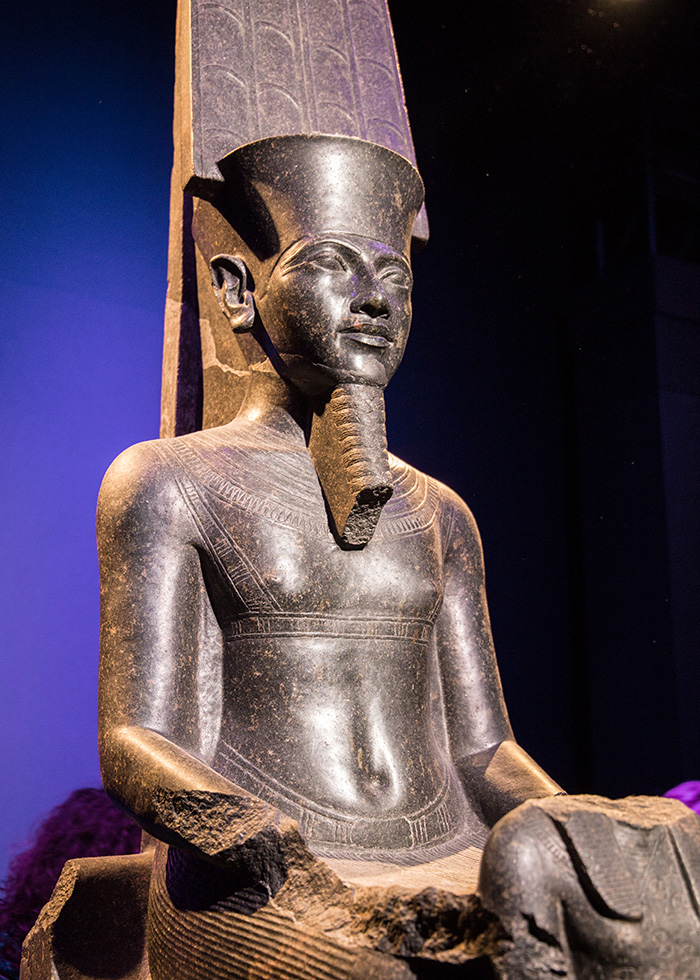
Upon entry to the exhibition hall, the statue of the god Amun is first shown. The Amun is a god guarding the pharaoh. When the tomb was excavated, it stood at the entrance of the pyramid. This statue was originally exhibited at the Louvre Museum in Paris and for this special Egyptian world exhibition, they cooperated together to display it as a team.
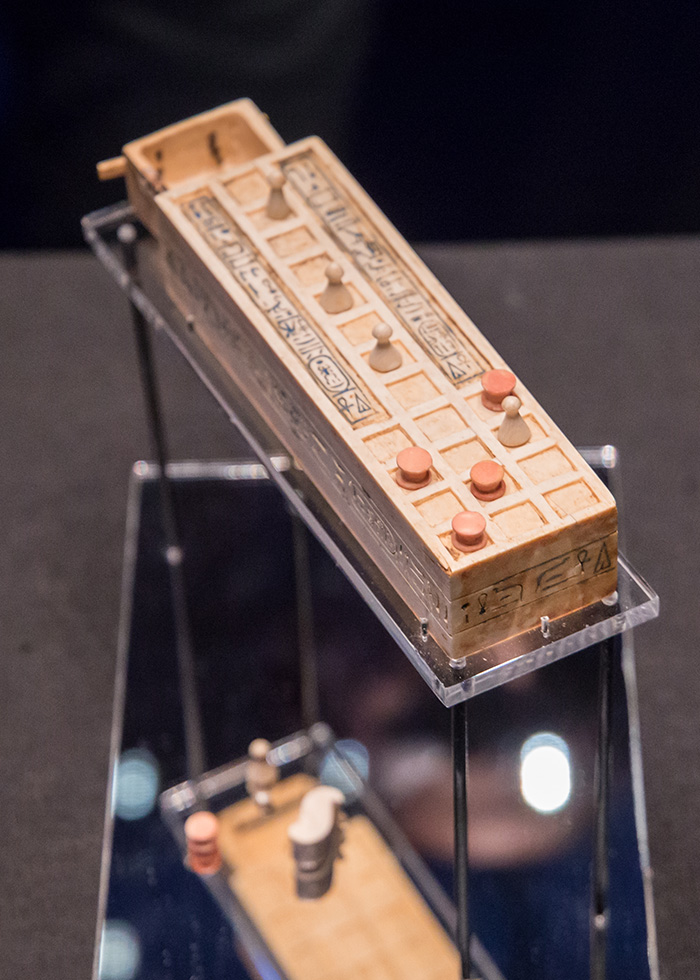
The ancient Egyptians' remains for a young Pharaoh Toutankhamon which were needed to cross the valley of death and resurrect. Death was regarded as the beginning of a new life and the colorful funeral ceremonies and rich ceremonial articles were indispensable parts of the path. Some of the articles area hunting tools, vases, ornaments and board games called Senet, etc. Senet is a game which Pharaoh enjoyed but it is still not known exactly how its played.
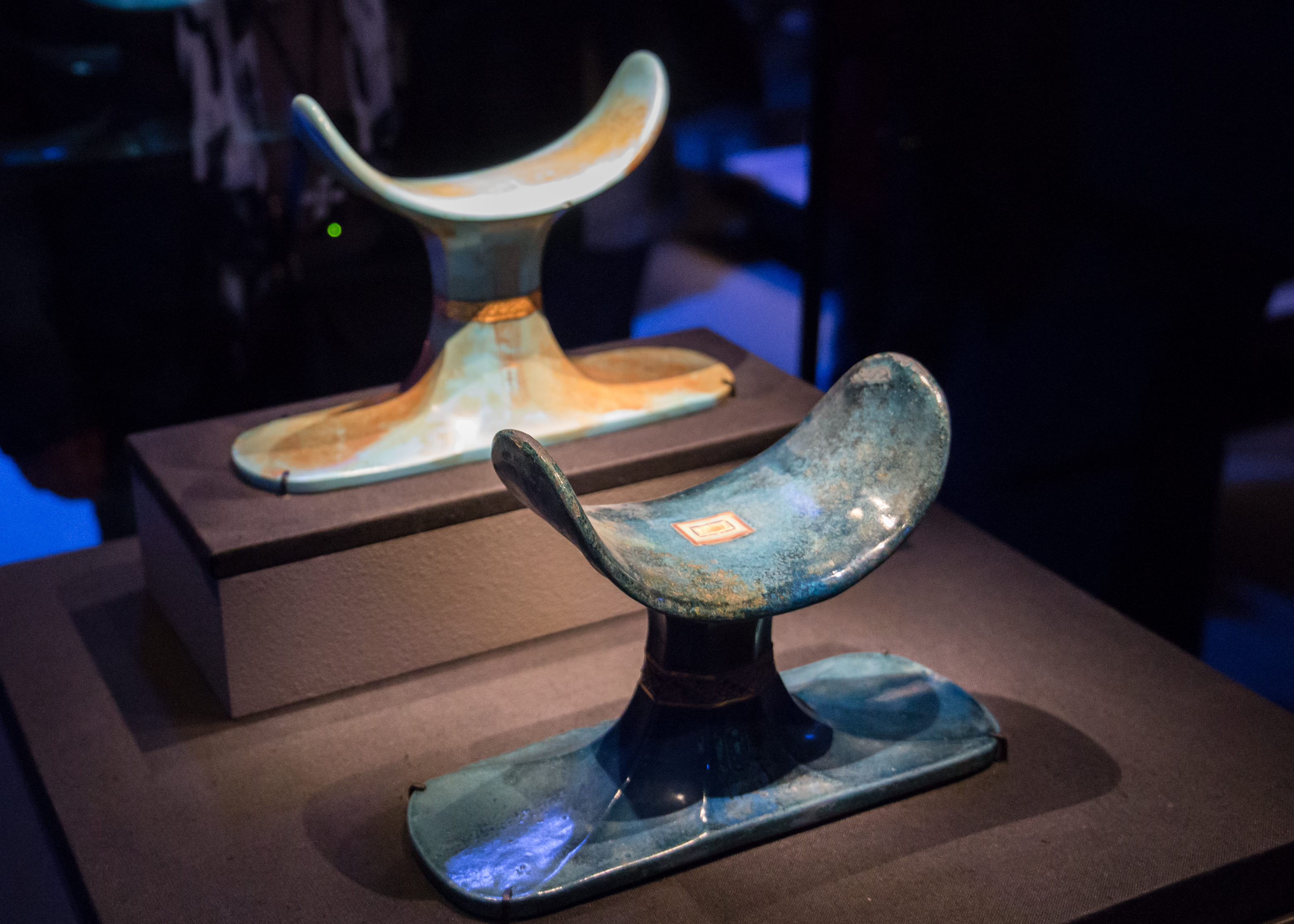
Sleep meant the closest state to the afterlife for ancient Egyptians. They thought that the gods would come to their dreams, give advice, and test them with nightmares. The headrest used for the sleep was considered important. The headrest made of blue ceramic symbolizing the sky and the afterlife is also its first display in an overseas exhibition.
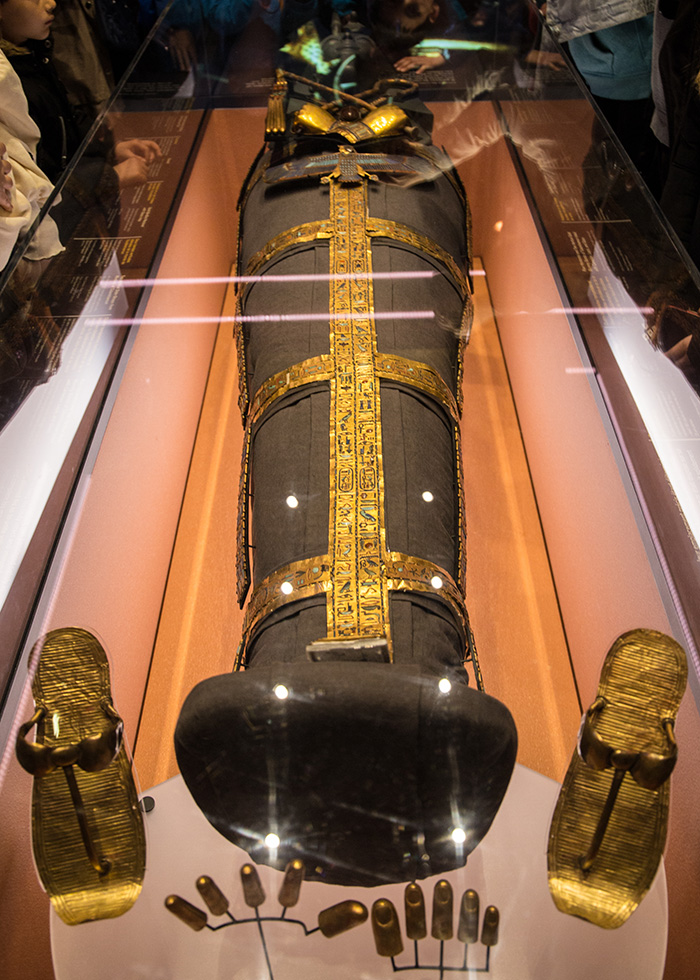
The last gate of the tomb, the Resurrection Gate, leads us to the mummies' world. The ancient Egyptians made thorough preparations to pass the stage of 'death' to welcome new life safely. It was a great task to bury their pharaoh safely and tidily. Making a mummy enabled a perfect resurrection of the body by tightly wrapping it with a bandage so that the pharaoh's body would remain intact without being damaged. The buriers gorgeously decorated the pharaoh's grave with golden jewelry and golden sandals that show the pharaoh's power. The gold band surrounding the mummy is engraved with a hieroglyphic letter representing protective magic and the name of Toutankhamon.
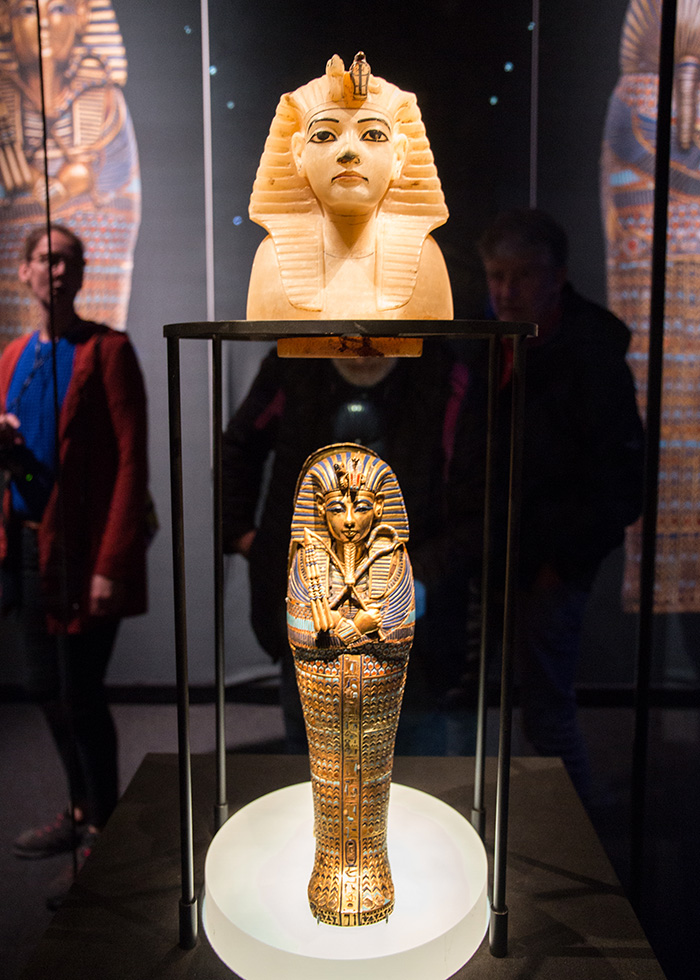
Before mummies were a common practice, the Pharaoh's body was opened after dying and all of the organs were removed and stored in the Canopic Jar. Take a look at one of the Canopic Jars of Toutankhamon, dedicated to Egyptian gods Imseti and Isis.
Toutankhamon's tomb was the most well-preserved sacred site of ancient Egyptian history since it was never discovered by grave robbers. On the other hand, there is a reason why this grave has become famous worldwide; the curse of Toutankhamon. Most of the people involved in the discovery of this grave ended up dying from a sudden illness or accident.
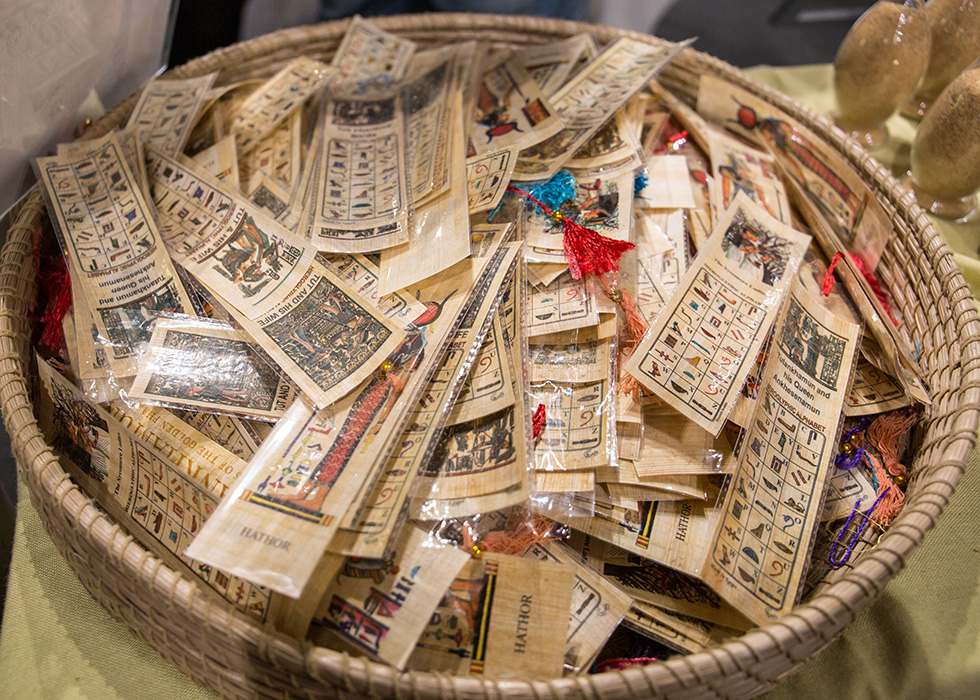
After the mysterious display there is a souvenir shop with books about Toutankhamon tombs, archaeological books, and imitations of remains excavated, etc. There are a variety of souvenirs such as stationery, interior products, utility products, and fashion items. Especially the bookmark made with Egyptian papyrus material is impressive.
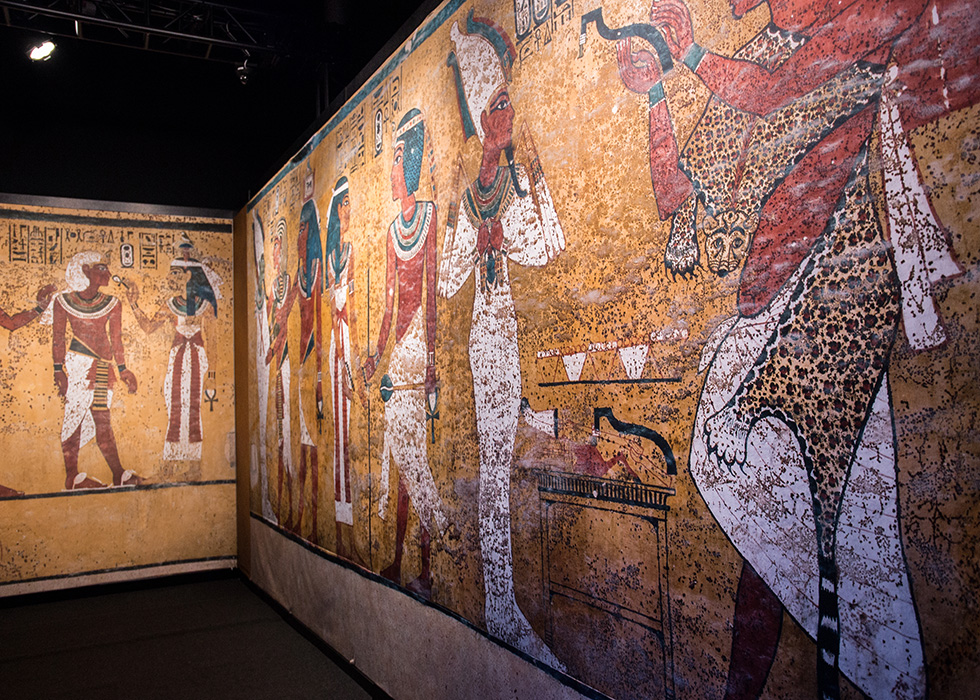
A mysterious and interesting exhibition of ancient Egyptians that children to the elderly can enjoy. It is recommended to check the availability and reserve a ticket in advance because it is a special exhibition in Paris which attracts not only the tourists but also French locals. When you make a reservation, you have to choose the time of the tour. If your chosen time is 9:00, you can enter from 9:00 to 9:30.
The exhibition hall is located in La Villette Park where you can enjoy a leisurely walk after visiting the Toutankhamon exhibit.
Words and photographs by Youra CHOI
Address : Parc de La Villette, 75019 Paris
Transportation : Metro line 5 Porte de Pantin Metro line 7 Porte de la Villette
Exhibition Period : March 23rd 2019 to September 15th 2019, 10:00 - 20:00
Price : Adult weekday 22 euros, weekend 24 uros / 4-14 weekday 18 euros,weenkend 20 euros / Children under four are free
Website : https://expo-toutankhamon.fr/en/